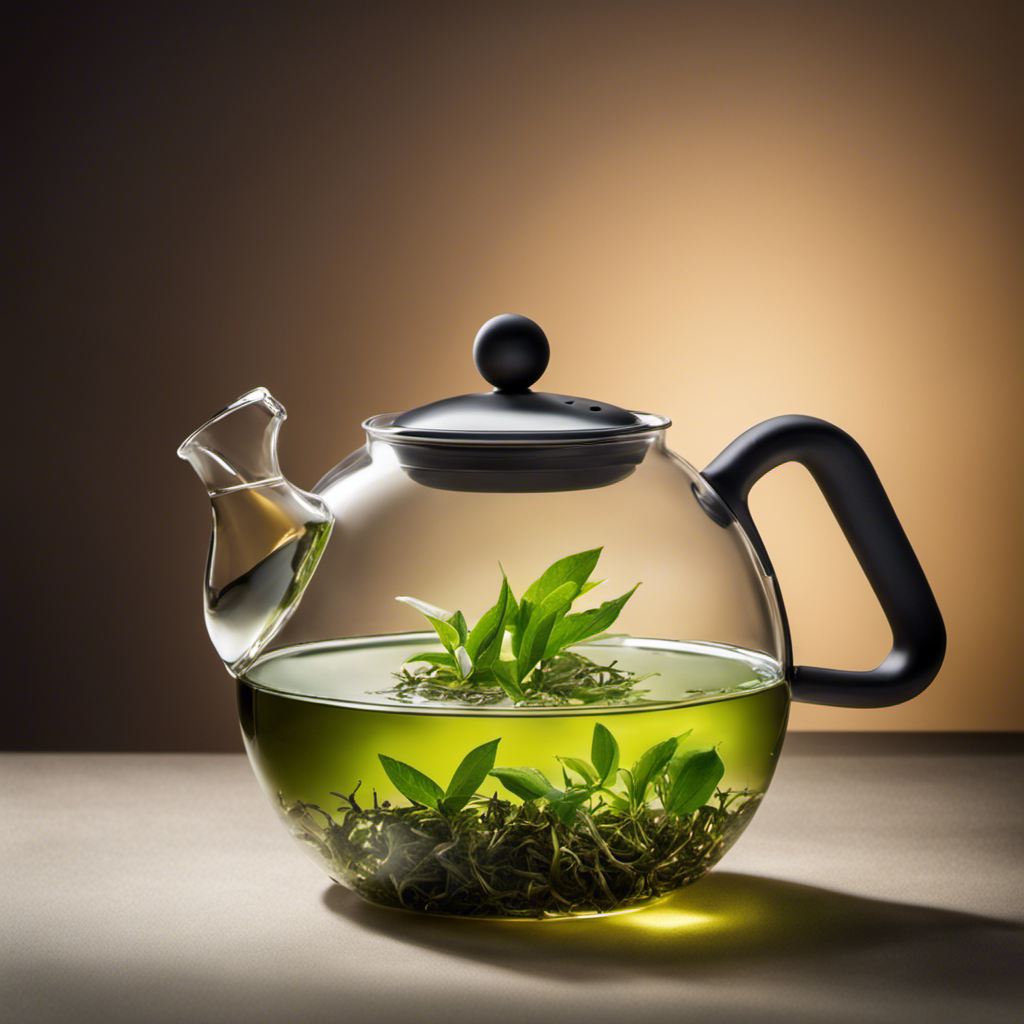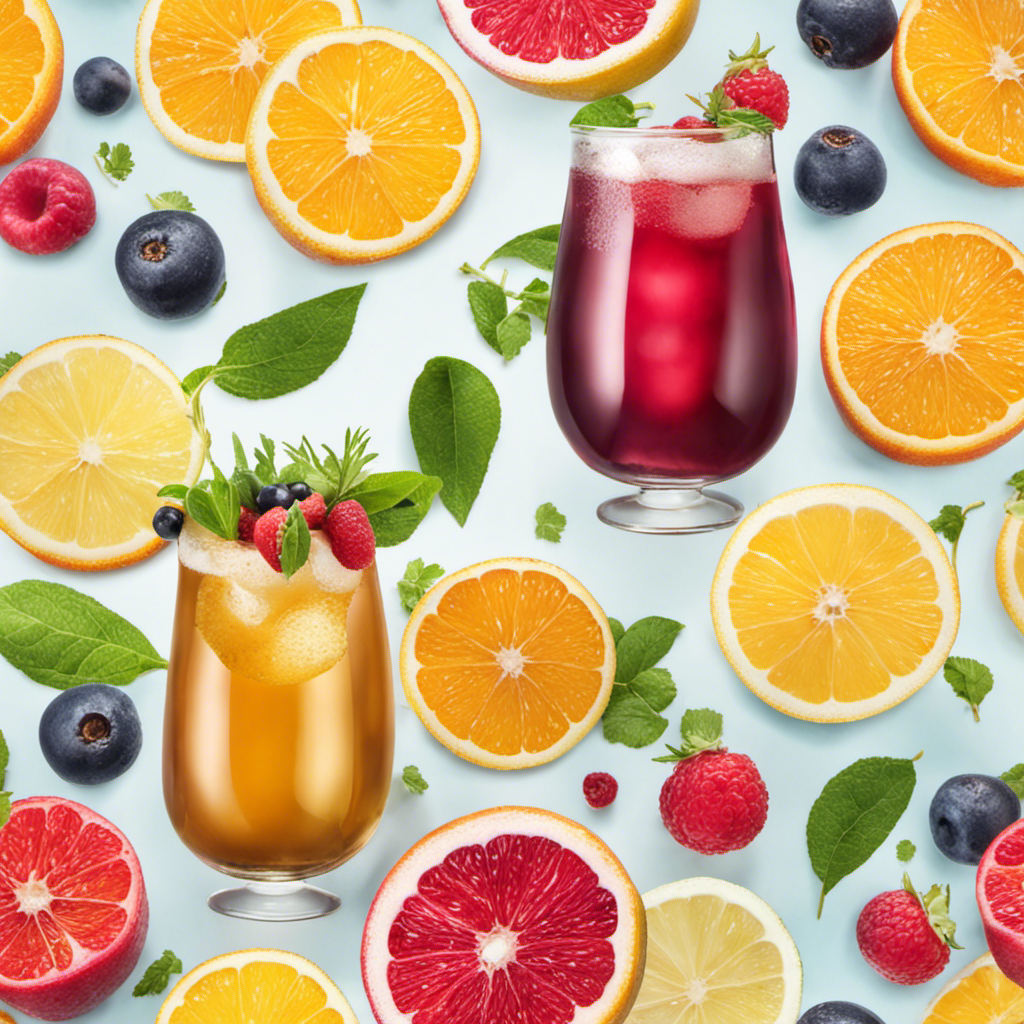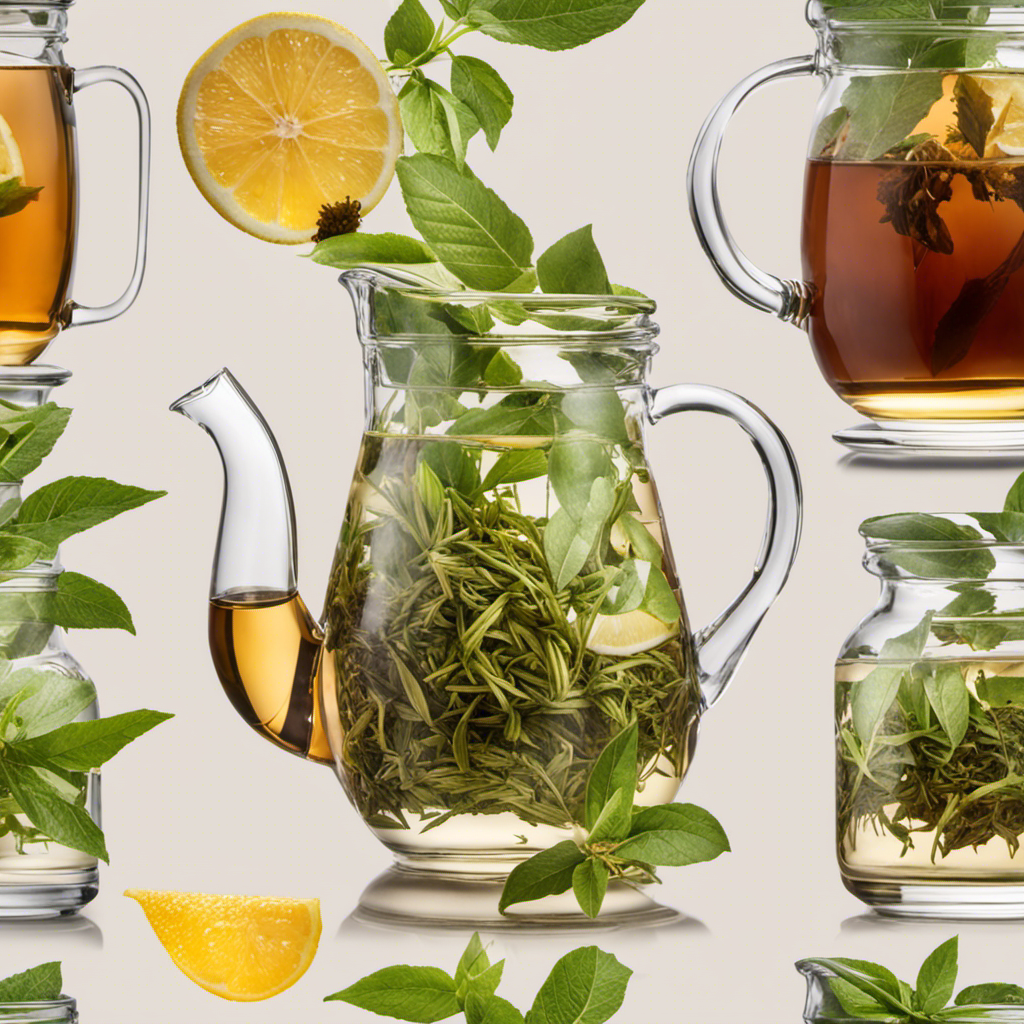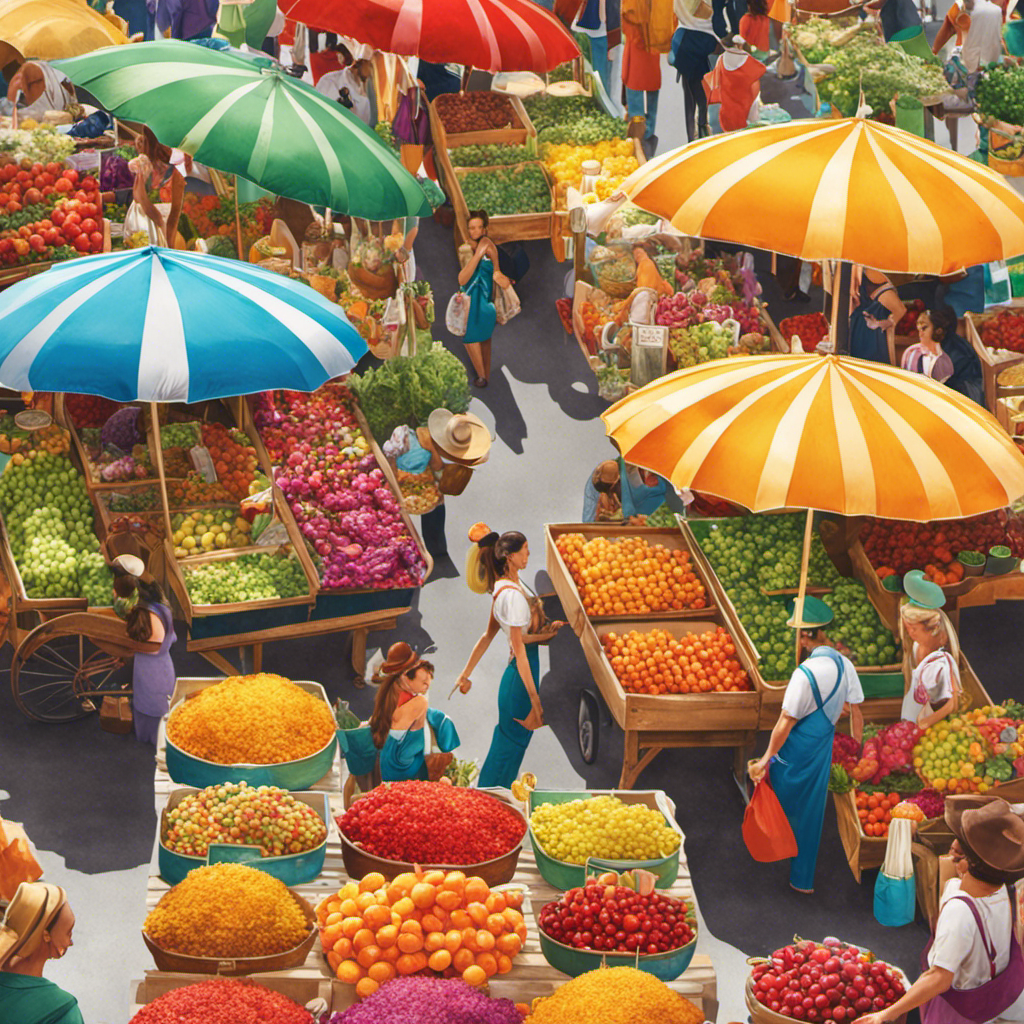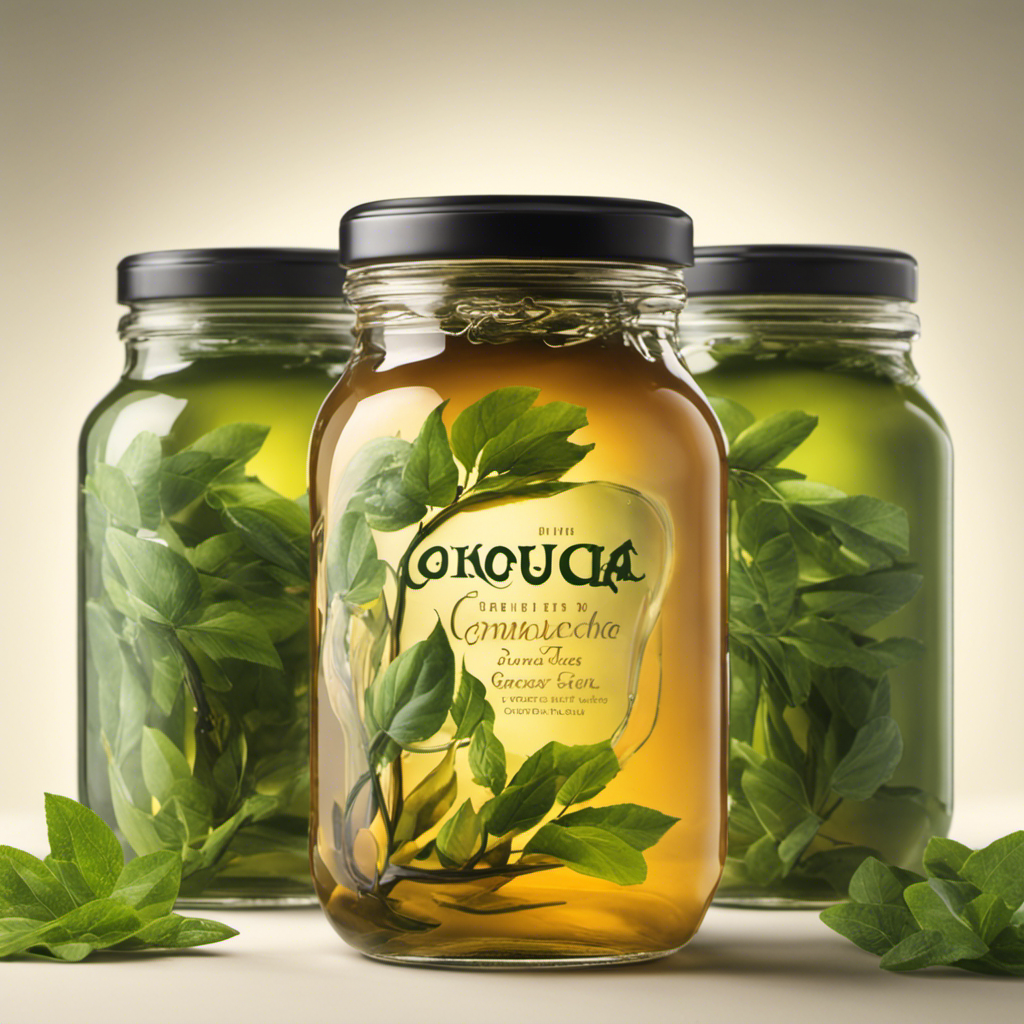Gyokuro
The Art Of Brewing Gyokuro: A Guide By Tea Experts
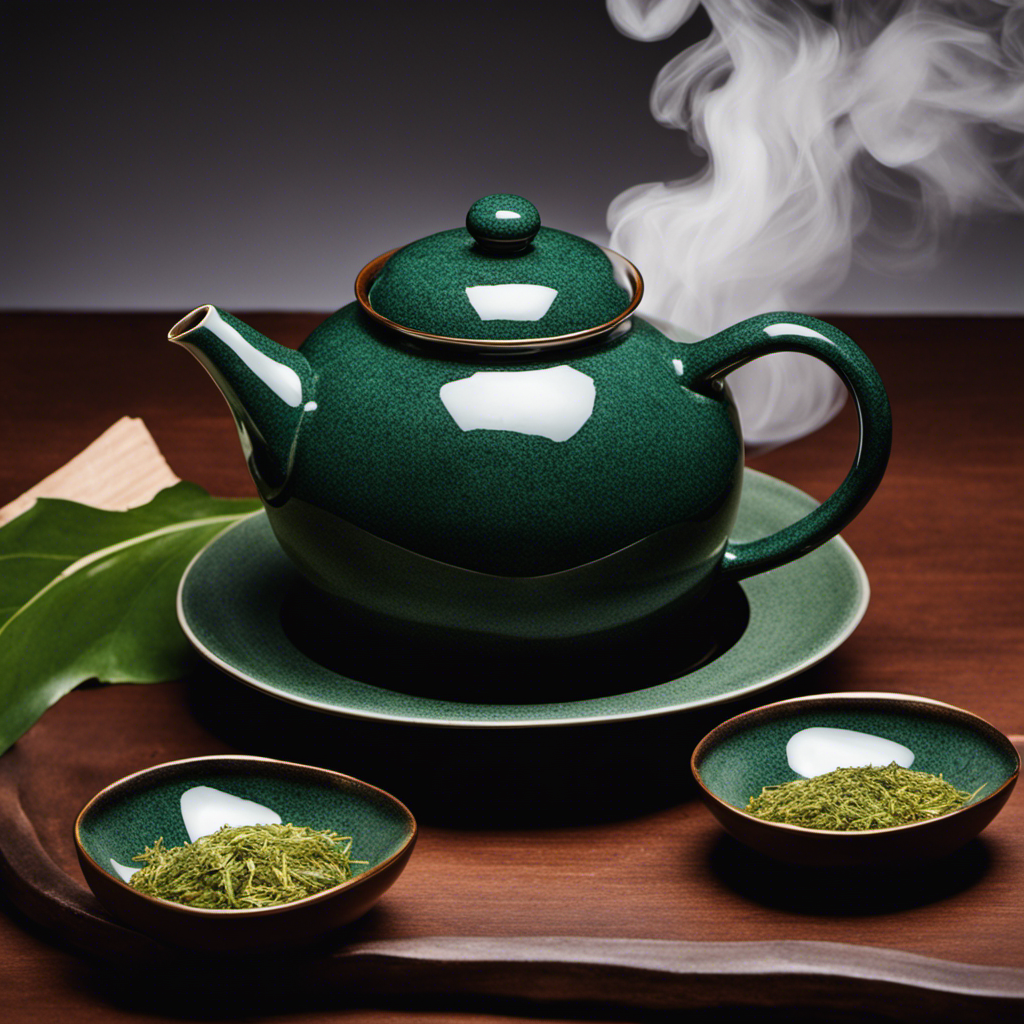
Crafting gyokuro is akin to conducting a refined symphony of tastes. It demands skill and expertise, and in this guide, I’ll lead you through the detailed process of this artistic endeavor.
As a tea expert, I have spent years perfecting the brewing methods that bring out the exquisite qualities of gyokuro. From the precise measurement of the leaves to the gentle pour of the water, each step is crucial in creating a cup of tea that is unparalleled in taste and aroma.
I will also delve into the recommended teapot for brewing gyokuro, the Shiboridashi, which allows the leaves to gracefully unfurl, enriching the infusion.
Along the way, I will share insights into the characteristics and history of gyokuro, unveiling its popularity and unique sweet and savory notes.
So, join me on this journey as we unlock the secrets of the art of brewing gyokuro.
Key Takeaways
- Gyokuro is a highly sought after leaf tea in Japan, known for its sweet and savory flavor.
- The recommended brewing methods for gyokuro include using low temperature water, long steeping time, and a higher leaf to water ratio.
- The Shiboridashi teapot is considered the best teapot for brewing gyokuro, allowing the leaves to expand without being cramped.
- Gyokuro leaves are tightly rolled into needle shapes and require 2 minutes to open up and release their flavor.
Brewing Methods
I always measure 5g of gyokuro leaves and place them in my teapot before pouring 150ml of 140°F water over them, making sure to avoid pouring directly on the leaves. This brewing method allows the leaves to steep and release their unique flavors without becoming bitter.
For a refreshing and smoother taste, I sometimes cold brew gyokuro by using 5g of leaves and 50ml of water. This method creates a concentrated, gel-like infusion that is perfect for hot summer days. Cold brewing also brings out different nuances in the tea, making it a delightful alternative to the traditional brewing method.
Whether I’m enjoying a hot or cold cup, gyokuro always offers a unique and delicious tea experience.
Recommended Teapot
The best teapot for brewing gyokuro is like a spacious home for the leaves, allowing them to stretch and release their full flavor without feeling cramped. A shiboridashi teapot is the perfect vessel for this delicate tea. Its design allows the gyokuro leaves to expand freely, resulting in a more flavorful infusion.
Using a shiboridashi teapot offers several benefits when brewing gyokuro. First, the leaves have ample space to unfurl, releasing their unique characteristics and aromas. Second, the clay used in handmade shiboridashi teapots from Tokoname enhances the overall brewing experience, as it’s known for its quality and ability to retain heat. Lastly, the teapot’s lid helps to keep the heat inside, ensuring a consistent brewing temperature.
While a shiboridashi teapot is the ideal choice, other teapots such as kyusu, hohin, and gaiwan can also be suitable for brewing gyokuro. Each of these teapots has its own unique features that can enhance the gyokuro brewing process. Ultimately, the choice of teapot depends on personal preference and the desired brewing experience.
Characteristics and History
Shading the tea plant for at least 3 weeks before harvest is a crucial step in the production of gyokuro, resulting in a smoother and sweeter flavor profile. This technique, known as "kabuse," involves covering the tea plants with shade cloths to limit sunlight exposure. By reducing the amount of direct sunlight, the tea leaves produce higher levels of chlorophyll and amino acids, resulting in a more vibrant green color and a unique umami taste.
Gyokuro cultivation techniques have evolved over centuries to create different flavors in the cultivars. The choice of cultivar, the specific variety of tea plant used, greatly influences the taste of gyokuro. Some cultivars are known for their rich sweetness, while others have a more vegetal and grassy flavor. Farmers carefully select and cultivate these different cultivars to offer a diverse range of gyokuro options for tea enthusiasts to enjoy.
To help you better understand the different flavors of gyokuro cultivars, here is a table showcasing some popular varieties:
| Gyokuro Cultivar | Flavor Profile |
|---|---|
| Yabukita | Sweet, Umami |
| Okumidori | Vegetal, Fresh |
| Saemidori | Floral, Fruity |
| Asahi | Rich, Nutty |
| Gokou | Delicate, Subtle |
Each of these cultivars offers a unique taste experience, allowing tea lovers to explore the world of gyokuro and discover their preferred flavor profiles.
Frequently Asked Questions
How is gyokuro different from other types of green tea?
Gyokuro is distinct from other green teas due to its unique flavor profile and harvesting process. It has a sweet and savory taste, reminiscent of miso soup, attributed to the amino acids in the leaves. Gyokuro is harvested by shading the tea plant for at least 3 weeks before picking the top 3 leaves, which are then steamed, rolled, and dried.
Can gyokuro be steeped multiple times?
Yes, gyokuro can be steeped multiple times. Its unique steeping techniques and high leaf to water ratio allow for multiple infusions. Each steeping reveals different flavor profiles, providing a rich and enjoyable tea experience.
What is the best water temperature for brewing gyokuro?
The best water temperature for brewing gyokuro is 140°F. This temperature allows the flavors to develop without becoming bitter. Factors such as leaf to water ratio and steeping time also play a role in achieving the perfect cup of gyokuro.
What is the recommended storage method for gyokuro?
To preserve the freshness of gyokuro, it is recommended to store it in an airtight container in a cool, dark place. This helps to protect the delicate flavors and aromas of the tea.
Can gyokuro be blended with other teas or ingredients?
Yes, Gyokuro can be blended with other teas or ingredients to create unique flavor profiles. Blending possibilities include combining Gyokuro with matcha for a vibrant green tea blend or adding dried fruits for a fruity twist.
Conclusion
In conclusion, the art of brewing gyokuro is a meticulous process that requires expertise and precision. By following the recommended brewing methods outlined by tea experts, such as using 5g of gyokuro leaves and water at 140°F, one can experience the unique and delightful flavors of this special tea.
The Shiboridashi teapot is highly recommended for brewing gyokuro, allowing the leaves to expand freely. Cold brewing gyokuro offers a refreshing and smoother taste. With its rich history and distinct characteristics, gyokuro remains a popular choice for tea enthusiasts.
Remember to brew at a low temperature, for a longer time, and with a higher leaf to water ratio for the best results.
Arf, an author and an innovative enthusiast of coffee, coffee alternatives, and tea, plays a crucial role as a contributor to the esteemed Cappuccino Oracle platform. Renowned for his curiosity and passion for these captivating beverages, Arf has carved out a unique space for himself in the world of exploration and writing. He realized that coffee, coffee alternatives, and tea are not mere drinks to keep one awake, but universes of flavors and stories waiting to be explored.
Arf’s articles for Cappuccino Oracle blend meticulous research with personal experiences, providing readers with an in-depth understanding of various types of coffee, coffee alternatives, and tea, along with their unique characteristics, cultures, and histories. His honest reviews and engaging narratives guide readers on their own journeys, helping them discover their preferences and find their perfect brew.
Gyokuro
Unveiling Japan’s Premier Gyokuro Regions
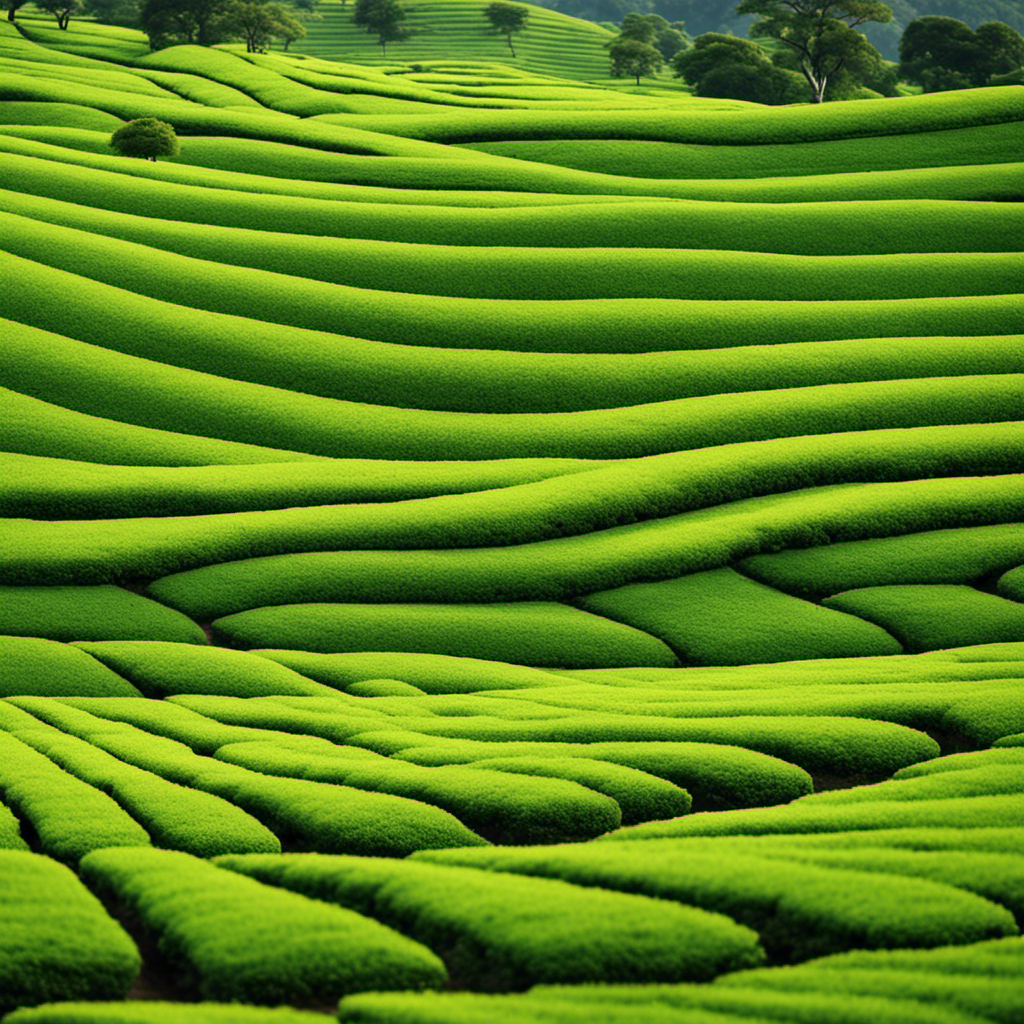
As I enjoy a comforting warm cup of gyokuro, the premium Japanese green tea, I find myself in awe of its complex flavors and subtle fragrance. It’s interesting to consider how various areas in Japan contribute their unique traits to the production of this exceptional tea.
In this article, we will delve into the world of gyokuro and unveil Japan’s premier gyokuro regions.
Ironically, while Shizuoka is the largest tea growing region in Japan, it’s not particularly known for gyokuro. Its climate favors a different cultivar, making it more suitable for matcha production.
On the other hand, Yame, a small subregion within Fukuoka, stands out as the premier gyokuro region. With its high-scoring teas in competitions and responsible for 3% of total tea fields in Japan, Yame consistently produces top-notch gyokuro.
Uji, famous for matcha production, has its own historical significance in Japanese green tea, while Kagoshima benefits from fertile soil and a mild subtropical climate.
So, join me on this journey as we uncover the secrets of Japan’s premier gyokuro regions and discover the unique qualities that make each region special.
Key Takeaways
- Yame is renowned as the premier gyokuro region and consistently produces high-scoring teas in competitions.
- Shizuoka, although the largest tea growing region in Japan, is not known for gyokuro due to its climate favoring a different cultivar.
- Uji is famous for matcha production and has historical significance in Japanese green tea.
- Kagoshima, the second largest tea growing region in Japan, benefits from fertile soil and a mild subtropical climate, and is home to renowned organic gyokuro farmer Mr. Sakamoto.
Best Gyokuro Region
Based on the reputation and annual gyokuro competition scores, Yame stands out as the best gyokuro region due to its consistent production of high-scoring teas and its status as the premier gyokuro region in Japan.
Yame is renowned for its exceptional gyokuro production techniques, which yield teas with unique flavor profiles. The region’s tea farmers meticulously cultivate the gyokuro plants by shading them from direct sunlight for several weeks before harvest. This process enhances the tea’s sweetness and umami flavors while reducing its bitterness. The result is a delicate and smooth tea with a rich, vegetal taste and a vibrant green color.
Yame’s gyokuro teas consistently receive praise for their complex aroma, mellow sweetness, and lingering aftertaste. It is no wonder why Yame is considered the pinnacle of gyokuro production in Japan.
Criteria for Determining
To find the ultimate gyokuro region, one must consider the reputation and annual competition scores, allowing the true champion to shine. When determining the best gyokuro region, several factors are considered, with competition scores playing a crucial role. Each region’s performance in gyokuro competitions reflects the quality and consistency of their teas. The table below showcases the competition scores for the four gyokuro regions:
| Gyokuro Region | Competition Score |
|---|---|
| Yame | High |
| Shizuoka | Not recognized |
| Uji | Not applicable |
| Kagoshima | Moderate |
As we can see, Yame stands out with consistently high scores, solidifying its reputation as the premier gyokuro region. Shizuoka, on the other hand, is not recognized as the best due to its climate favoring a different cultivar. Uji, renowned for matcha production, does not have competition scores for gyokuro. By considering these factors, it becomes clear that Yame is the ultimate gyokuro region.
General Gyokuro Information
When exploring the world of gyokuro, it’s important to understand the general information surrounding this unique type of tea. Gyokuro is known for its distinct cultivation methods and requires specific conditions for optimal growth. Here are five key aspects to keep in mind:
- Gyokuro is cultivated under shade, which enhances its flavor and aroma. The leaves are shade-grown.
- Only the youngest and finest leaves are plucked, resulting in a delicate and flavorful tea. The picking process is selective.
- The leaves are steamed to prevent oxidation, preserving their vibrant green color and fresh taste. This is part of the steaming process.
- Gyokuro has lower caffeine levels compared to other green teas, making it a popular choice for those seeking a milder option. It has a low caffeine content.
- Gyokuro offers a rich, sweet, and umami taste, with hints of seaweed and grass. It has a unique flavor profile.
These factors contribute to the allure of gyokuro, making it a truly exceptional tea with a devoted following.
Frequently Asked Questions
What is the history behind gyokuro tea and its cultivation in Japan?
Gyokuro tea has a rich history in Japan, dating back to the 1800s. Its cultivation techniques involve shading the tea leaves for several weeks before harvest, resulting in a unique flavor profile.
Are there any specific health benefits associated with drinking gyokuro tea?
Drinking Gyokuro tea offers numerous health benefits. Packed with antioxidants, it boosts metabolism, aids in weight loss, and promotes heart health. The high levels of L-theanine provide relaxation and improved mental focus.
How does the cultivation process of gyokuro tea differ from other types of green tea?
The cultivation process of gyokuro tea differs from other green teas in that it requires shading for several weeks before harvest. This technique enhances the tea’s umami flavor and produces a vibrant, rich green color.
Is gyokuro tea more expensive compared to other types of green tea?
Gyokuro vs. Matcha: Which is pricier? Gyokuro tea tends to be more expensive compared to other types of green tea due to its unique cultivation and processing methods. Factors such as shade-grown leaves and hand-picking contribute to its higher cost.
Are there any specific rituals or traditions associated with the preparation and serving of gyokuro tea?
Preparing and serving gyokuro tea is an art form, steeped in tradition and cultural significance. The tea ceremony is a beautiful ritual, where the delicate leaves are carefully brewed and served with grace and reverence.
Conclusion
After exploring the four main gyokuro regions in Japan, it’s clear that Yame is the undisputed champion. Its reputation as the premier gyokuro region is well-deserved, with its consistent high scores in competitions and its impressive 3% contribution to Japan’s tea fields.
The other regions, such as Shizuoka and Uji, have their own specialties. Shizuoka excels in matcha production, and Uji is a popular tourist destination.
However, Yame’s dedication to producing the finest gyokuro tea sets it apart from the rest. It truly stands tall like a majestic mountain, its flavors reaching new heights with every sip.
Arf, an author and an innovative enthusiast of coffee, coffee alternatives, and tea, plays a crucial role as a contributor to the esteemed Cappuccino Oracle platform. Renowned for his curiosity and passion for these captivating beverages, Arf has carved out a unique space for himself in the world of exploration and writing. He realized that coffee, coffee alternatives, and tea are not mere drinks to keep one awake, but universes of flavors and stories waiting to be explored.
Arf’s articles for Cappuccino Oracle blend meticulous research with personal experiences, providing readers with an in-depth understanding of various types of coffee, coffee alternatives, and tea, along with their unique characteristics, cultures, and histories. His honest reviews and engaging narratives guide readers on their own journeys, helping them discover their preferences and find their perfect brew.
Gyokuro
The Secrets Of The Finest Gyokuro Tea: Unveiling The Best Brand
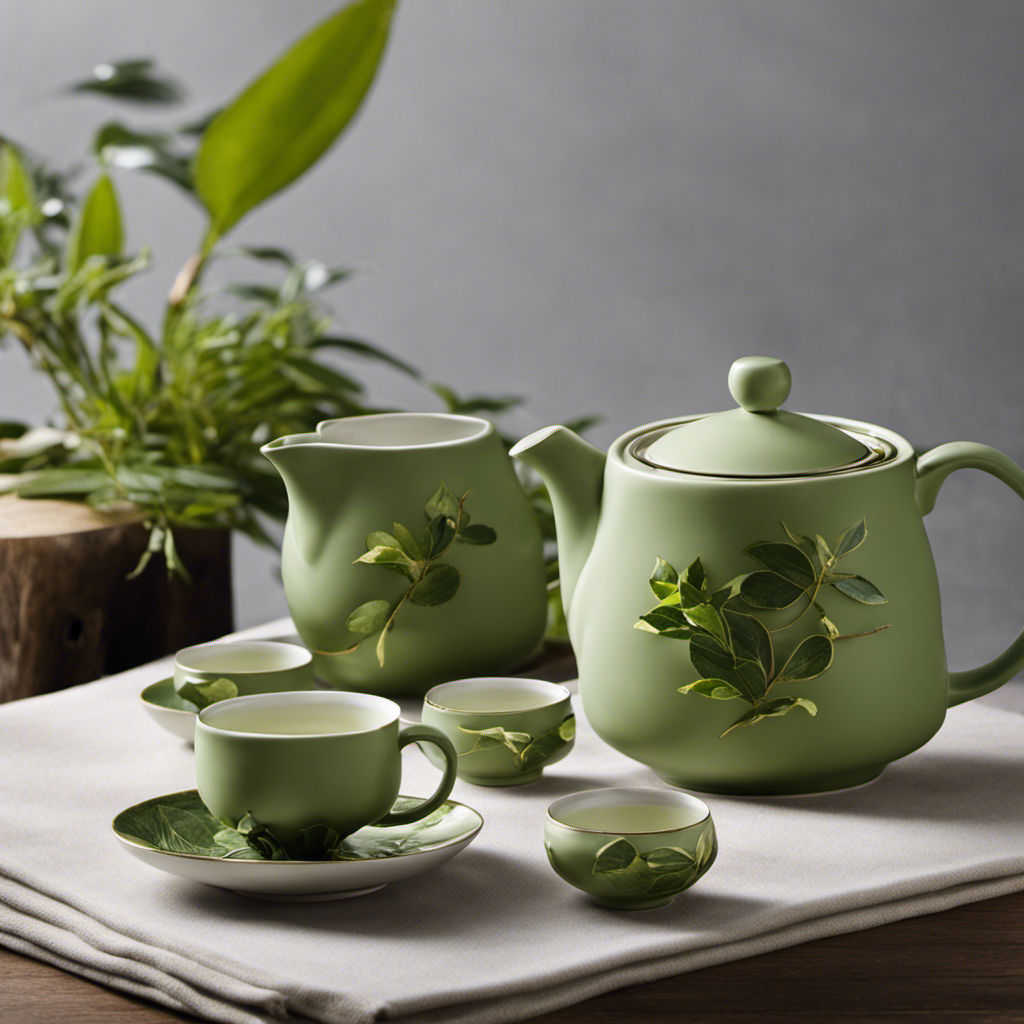
As someone who passionately enjoys tea, the realm of gyokuro tea has always captured my interest. The intricate dance between sweet and savory tastes, the carefully monitored growing process, and the deep-seated history of this esteemed Japanese drink have both intrigued and delighted my palate and sense of wonder.
In my quest to find the best gyokuro tea brand, I have come to realize that it is not just about the label on the package, but rather the farmers who dedicate their lives to producing this exceptional tea. One farmer, in particular, stands out – Mr. Sakamoto. Since 1985, he has been cultivating gyokuro without the use of pesticides or chemicals, ensuring the purity and quality of his leaves. His commitment to organic cultivation, combined with the labor-intensive production process, results in a tea that is truly exceptional.
Join me as we delve into the secrets of gyokuro tea, uncovering the best brand and the incredible craftsmanship behind it.
Key Takeaways
- Gyokuro is considered the most sought after leaf tea in Japan.
- The best gyokuro tea is produced by Mr. Sakamoto, who has been farming gyokuro without pesticides or chemicals since 1985.
- High-quality gyokuro should be organically grown and have dark and tightly rolled leaves.
- Gyokuro is made by shading the plants for a minimum of 3 weeks and only the top 3 leaves of the tea plant are used.
Gyokuro Tea: Introduction
I know that gyokuro tea is a shaded green tea from Japan and is considered the most sought-after leaf tea in Japan. Gyokuro tea not only offers a unique and captivating flavor profile, but it also provides numerous health benefits. Packed with antioxidants, it helps boost the immune system, promotes cardiovascular health, and aids in weight management.
When it comes to brewing techniques, gyokuro tea requires special attention. The water temperature should be around 140°F (60°C), and the steeping time should be longer, typically around 2-3 minutes. This low temperature and longer steeping time allow the leaves to slowly release their delicate flavors.
To fully appreciate the rich umami taste and the sweet, vegetal aroma of gyokuro tea, it is important to follow these brewing techniques carefully.
Gyokuro Tea: Importance of Farmers
When it comes to gyokuro tea, the farmers who cultivate and produce it play a crucial role. Organic farming is essential in ensuring the quality and purity of gyokuro.
One farmer, in particular, stands out in the world of gyokuro production: Mr. Sakamoto. Since 1985, he has been dedicated to producing gyokuro without the use of pesticides or chemicals. His commitment to organic farming has made him renowned in the industry.
Mr. Sakamoto’s techniques involve shading the tea plants for a minimum of 3 weeks, carefully selecting only the top 3 leaves of the tea plant, and steaming the leaves to preserve their flavor. These meticulous steps result in gyokuro with a unique flavor profile and exceptional quality.
The gyokuro produced by Mr. Sakamoto is sought after by dozens of tea brands worldwide, a testament to his expertise and dedication to producing the finest gyokuro tea.
Gyokuro Tea: Characteristics and Production Process
To understand the characteristics and production process of gyokuro tea, it’s important to delve into the labor-intensive methods used in cultivating and processing this unique Japanese green tea.
-
Health Benefits of Gyokuro Tea:
- Gyokuro tea is rich in antioxidants, which help boost the immune system and reduce the risk of chronic diseases.
- It contains L-Theanine, an amino acid that promotes relaxation and mental clarity.
- Gyokuro tea can aid in weight loss by boosting metabolism and suppressing appetite.
- It’s also known to support cardiovascular health and regulate blood sugar levels.
-
Brewing Techniques for Gyokuro Tea:
- Use cool water (around 140°F) to steep gyokuro tea for 2-3 minutes.
- Use a high leaf to water ratio (around 1.5 to 2 teaspoons per 8 ounces of water) to extract the full flavor of gyokuro.
- Gyokuro tea is best brewed in a small teapot or a kyusu, allowing for better control of the steeping time and temperature.
- The first infusion should be enjoyed on its own, while subsequent infusions can be slightly longer to extract different flavors.
Understanding these characteristics and brewing techniques will enhance your appreciation for the finest gyokuro tea.
Frequently Asked Questions
How long does it take for gyokuro leaves to be shaded before harvesting?
Gyokuro leaves are shaded for a minimum of 3 weeks before harvesting. This shading duration enhances the quality of the tea by increasing the chlorophyll content and reducing bitterness, resulting in a sweeter and more savory flavor profile.
Are there any specific regions in Japan known for producing the best gyokuro tea?
The best gyokuro brands can be found in Uji, Kyoto, and Yame, Fukuoka in Japan. These regions are known for their ideal climate and soil conditions, which contribute to the production of high-quality gyokuro tea.
Can gyokuro leaves be used to make other types of tea?
Yes, gyokuro leaves can be used to make other types of tea. They are often used to make matcha, a powdered green tea, and sencha, a regular green tea. The benefits of gyokuro tea include its high concentration of antioxidants and its unique flavor profile.
Are there any specific brewing techniques or recommendations for preparing gyokuro tea?
When it comes to brewing techniques for gyokuro tea, there are a few recommendations to ensure the perfect cup. Use low water temperature (around 140°F), steep for 2-3 minutes, and savor the rich umami flavors.
How does gyokuro tea differ from other types of Japanese green tea, such as sencha or matcha?
Gyokuro tea vs. other Japanese green teas: a taste comparison. Gyokuro has a unique flavor profile with sweet and savory notes, similar to miso soup. Health benefits of gyokuro tea compared to sencha or matcha include higher levels of amino acids and lower caffeine content.
Conclusion
In conclusion, after delving into the world of gyokuro tea, it becomes clear that the true essence of this extraordinary beverage lies not in the brand, but in the dedicated farmers who cultivate it.
Mr. Sakamoto, a renowned figure in the industry, epitomizes the commitment to organic cultivation and meticulous production that sets gyokuro apart. It’s ironic that while many may search for the best brand, the true secret to the finest gyokuro lies in understanding and appreciating the labor-intensive process and the farmers’ unwavering passion.
Cheers to the hidden heroes behind this exquisite tea.
Arf, an author and an innovative enthusiast of coffee, coffee alternatives, and tea, plays a crucial role as a contributor to the esteemed Cappuccino Oracle platform. Renowned for his curiosity and passion for these captivating beverages, Arf has carved out a unique space for himself in the world of exploration and writing. He realized that coffee, coffee alternatives, and tea are not mere drinks to keep one awake, but universes of flavors and stories waiting to be explored.
Arf’s articles for Cappuccino Oracle blend meticulous research with personal experiences, providing readers with an in-depth understanding of various types of coffee, coffee alternatives, and tea, along with their unique characteristics, cultures, and histories. His honest reviews and engaging narratives guide readers on their own journeys, helping them discover their preferences and find their perfect brew.
Gyokuro
The Secrets Of Gyokuro Tea: Cultivation, Flavor, And Mr. Sakamoto’s Contribution
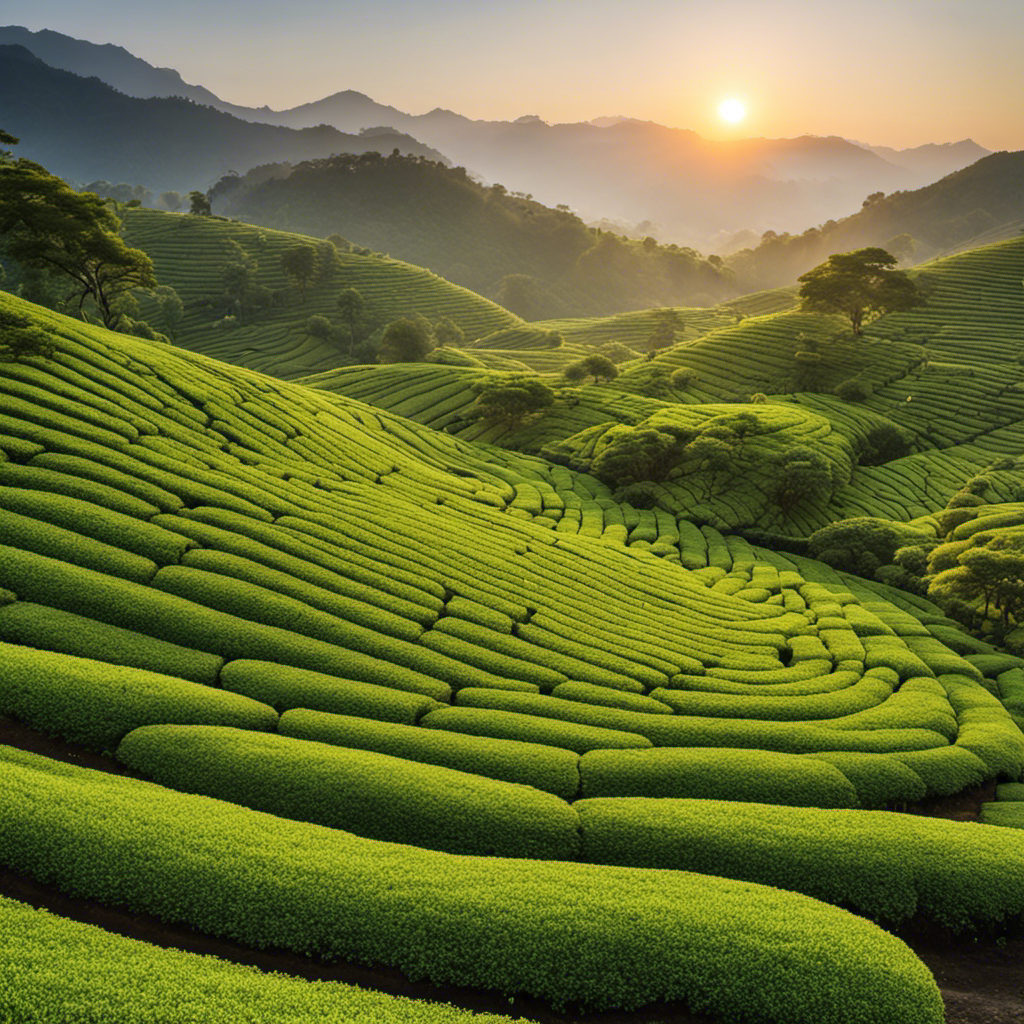
Have you ever experienced a tea so delightful that it took you to a world of undeniable delight? Get ready to have your palate thrilled and your senses stirred as we explore the mysteries of Gyokuro tea.
This Japanese gem is renowned for its unparalleled flavor and superior quality. And let me tell you, it’s worth every penny.
The cultivation process of Gyokuro is a labor of love, involving meticulous care and attention to detail. From the shading of the plants to the careful selection of the top sprouts, every step is designed to create a tea that is bursting with flavor.
And one man, Mr. Sakamoto, has revolutionized the world of Gyokuro tea production. His innovative fertilizer has transformed the way these plants grow, resulting in a tea that is vibrant, nutrient-rich, and simply divine.
So join me as we uncover the secrets behind the cultivation, flavor, and Mr. Sakamoto’s invaluable contribution to the world of Gyokuro tea. Get ready for a journey of taste and discovery like no other.
Key Takeaways
- Gyokuro tea is made from the gyokuro plant, which is shaded for 3 weeks prior to harvest to improve its flavor.
- Shading the gyokuro plant forces it to produce more chlorophyll, theanine, and caffeine, but it is a stressful time for the plant and requires the use of chemicals and fertilizers to compensate for the lack of sunlight.
- Mr. Sakamoto developed a fertilizer that allows gyokuro plants to survive without sunlight, strengthening their cellular density and improving nutrient content. He takes a holistic approach to tea cultivation.
- Gyokuro tea is expensive due to its high quality and superior flavor. It has a dense, jade green liquor and a high caffeine content, but theanine helps balance the caffeine. Mr. Sakamoto offers different types of gyokuro tea.
What is Gyokuro Plant?
The Gyokuro Plant is a unique tea plant that’s cultivated in a specific way to enhance its flavor. One of the key techniques used is shading the plants for three weeks prior to harvest. This process stimulates the production of chlorophyll, theanine, and caffeine, resulting in a tea with a rich and complex taste.
Shading is a stressful time for the plant, but it’s necessary to achieve the desired flavor profile. To compensate for the lack of sunlight, chemicals and fertilizers are used. One notable contribution to the cultivation of Gyokuro tea is Mr. Sakamoto’s techniques. He’s developed a fertilizer that keeps the Gyokuro plants alive without sunlight, while also improving cellular density and nutrient content.
His holistic approach to tea cultivation has helped produce high-quality Gyokuro with exceptional flavor and numerous health benefits.
Cultivation Process
During the shaded period of cultivation, I can feel the plant’s stress as it strives to produce more chlorophyll, theanine, and caffeine. This shading process is crucial to the development of high-quality gyokuro tea.
The benefits of shading are numerous. Firstly, it forces the plant to produce more chlorophyll, giving the leaves their vibrant green color. Secondly, it enhances the production of theanine, which contributes to the tea’s unique flavor and aroma. Lastly, the shading stimulates the plant to produce more caffeine, resulting in a tea with a higher caffeine content.
To compensate for the lack of sunlight, chemicals and fertilizers are used to provide the necessary nutrients for the plant’s growth. This meticulous cultivation process ensures that gyokuro tea is of the utmost quality and flavor.
Types of Gyokuro Tea
When exploring the types of gyokuro tea, I was amazed by the variety of flavors and aromas available. Each type of gyokuro has its own unique characteristics, making the tea drinking experience truly delightful. From the delicate and floral notes of Asahi Gyokuro to the rich and umami flavors of Uji Gyokuro, there is something to suit every palate.
To help you understand the differences between these types of gyokuro tea, I have created a table below:
| Type of Gyokuro | Flavor Profile | Aroma |
|---|---|---|
| Asahi Gyokuro | Delicate, floral | Sweet, grassy |
| Uji Gyokuro | Rich, umami | Seaweed-like |
| Yame Gyokuro | Mellow, vegetal | Earthy, nutty |
In addition to their distinct flavors and aromas, gyokuro teas also offer potential health benefits. The high concentration of catechins and theanine in gyokuro tea may promote relaxation, improve mental focus, and support cardiovascular health. To fully enjoy the flavors and reap the benefits, it is important to use the correct brewing techniques, such as using lower water temperature and longer steeping times.
Frequently Asked Questions
How does the shading process affect the flavor and quality of gyokuro tea?
The shading process is like a secret ingredient that adds depth and complexity to the flavor profile of gyokuro tea. It enhances the tea’s umami taste and produces a delicate sweetness. The careful production process ensures the highest quality.
What specific chemicals and fertilizers are used to compensate for the lack of sunlight during shading?
During the shading process, specific chemicals and fertilizers are used to compensate for the lack of sunlight. These substances help maintain the plant’s health and enhance its nutrient content, ensuring optimal growth and flavor development. Shading techniques play a crucial role in the chemical composition of gyokuro tea.
How does Mr. Sakamoto’s fertilizer strengthen cellular density and improve nutrient content in gyokuro plants?
Isn’t it fascinating how Mr. Sakamoto’s innovative fertilizer techniques enhance the nutrient profile of Gyokuro plants? His fertilizer strengthens cellular density, ensuring optimal growth and nutrient absorption. As a result, Gyokuro tea boasts an exceptional nutrient content.
Why is gyokuro tea more expensive compared to other types of tea?
Gyokuro tea is more expensive compared to other types of tea due to its cultivation methods and production costs. The shading process, selective harvesting, and use of chemicals and fertilizers contribute to its high quality and superior flavor.
How does gyokuro tea’s caffeine content compare to that of coffee, and how is it balanced by theanine?
Gyokuro tea has more caffeine than coffee, but theanine in the tea balances its effects. The high caffeine content provides an energizing boost, while theanine promotes a state of relaxation and mental clarity, creating a harmonious and balanced experience.
Conclusion
In conclusion, Gyokuro tea is a truly exceptional and highly sought-after Japanese tea. Through the careful cultivation process and Mr. Sakamoto’s contributions, this tea offers a unique and exquisite flavor.
The shading period and selection of the top sprouts result in a tea that is rich in chlorophyll, theanine, and caffeine. The use of specialized fertilizers and Mr. Sakamoto’s holistic approach ensure the highest quality and nutrient content of the tea.
So, why not savor a cup of Gyokuro tea and experience its dense jade green liquor and perfectly balanced flavor? It’s a true gem among teas, guaranteed to please even the most discerning palate.
Bottoms up!
Arf, an author and an innovative enthusiast of coffee, coffee alternatives, and tea, plays a crucial role as a contributor to the esteemed Cappuccino Oracle platform. Renowned for his curiosity and passion for these captivating beverages, Arf has carved out a unique space for himself in the world of exploration and writing. He realized that coffee, coffee alternatives, and tea are not mere drinks to keep one awake, but universes of flavors and stories waiting to be explored.
Arf’s articles for Cappuccino Oracle blend meticulous research with personal experiences, providing readers with an in-depth understanding of various types of coffee, coffee alternatives, and tea, along with their unique characteristics, cultures, and histories. His honest reviews and engaging narratives guide readers on their own journeys, helping them discover their preferences and find their perfect brew.
-

 Americano4 weeks ago
Americano4 weeks agoHow to Make Americano With Moka Pot
-

 Americano2 weeks ago
Americano2 weeks agoHow to Make Korean Iced Americano
-

 Americano4 weeks ago
Americano4 weeks agoHow to Make Americano With Bialetti
-

 Americano4 weeks ago
Americano4 weeks agoHow to Make Dutch Bros Americano
-

 Americano1 week ago
Americano1 week agoHow to Make an Iced Americano With Nespresso
-
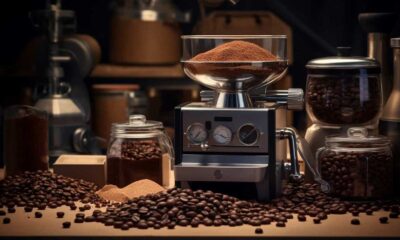
 Americano2 weeks ago
Americano2 weeks agoHow Many Shots of Espresso for 16 Oz Americano
-

 Americano4 weeks ago
Americano4 weeks agoHow to Make a Hazelnut Americano
-
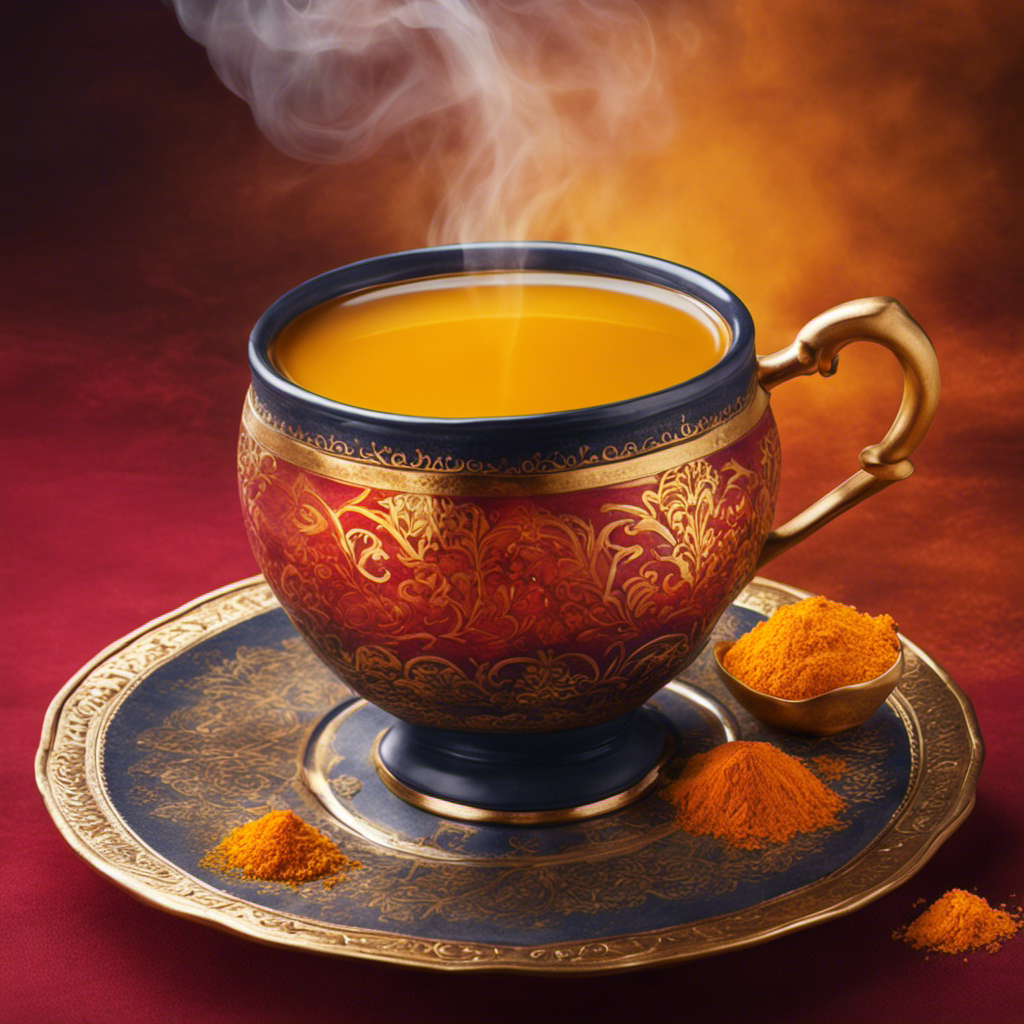
 Turmeric Tea1 week ago
Turmeric Tea1 week agoTurmeric Saffron Tea






